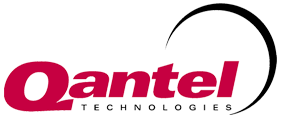Tariff Challenges: How to Communicate Rising Costs
Tariffs have been a hot topic recently. You’re likely paying higher prices to your suppliers and you’re faced with passing those increases on to your customers.
You might think about raising your prices. By rolling higher costs into the prices you charge for your products, increases may be less likely to stand out. On the other hand, if you explicitly call out tariffs as an additional charge, you clearly communicate that the increase is due to external factors.
With options for order-based miscellaneous charges and line-based surcharges, PowerShift supports your decision to call out cost increases on sales orders and invoices.
Miscellaneous Charges
Miscellaneous charge codes are defined in Miscellaneous Charge Codes Maintenance (TMSM). Each charge can be set up as a fixed amount or it can be calculated as a percentage of the order value (gross or net) or weight. You can set minimum and maximum amounts to control how much is charged. The print code you assign determines if the charge is detailed on the order or if miscellaneous charges are added together and printed as a subtotal.
Up to five miscellaneous charges can be specified on customer orders. The first can default based on the customer’s freight terms (set up in TFP, Freight Codes Maintenance) or special packaging code (set up in TSPM, Special Packaging Codes Maintenance).
In order maintenance, clicking the Totals button followed by the Misc charges button displays a window that enables you to add and change miscellaneous charge codes and amounts applied.
Surcharges
Having a hierarchical structure like pricing, surcharges in PowerShift are infinitely flexible. Surcharges are applied to order lines based on characteristics that you define. Some setup is required:
System Options
To use the surcharge feature for sales orders, you’ll need to make sure that Customer surcharges active? is selected in System Options Maintenance (XM) Order Processing Options.Surcharge Hierarchy
You’ll also need to set up a surcharge hierarchy in Price Hierarchy Maintenance (PHM). Hierarchies can be based on item attributes (item number, product class, product subclass, item price class), customer attributes (customer number, ARC, customer type, customer price class, item return code) or combinations of item and customer attributes.Surcharge Codes
Use Surcharge Codes Maintenance (TSCM) to define surcharge codes. For each surcharge code you set up, you specify how the charge is calculated. A surcharge can be a percentage of the cost or price based on the quantity ordered, total item weight, or it can be a fixed amount applied the order line.Surcharges Rules
Once you've established the hierarchy and surcharge codes, you can set up the specific rules that determine how surcharges are applied. In Price-Contract Maintenance (PCM), you specify groups of items and/or customers (based on the surcharge hierarchy), the surcharges that apply, and the percentages or amounts.Maintaining Surcharges
When you enter an order line with the right combination of characteristics, the surcharge is automatically added to the sales order line. Clicking the Surcharge button in order line maintenance displays a window that shows the surcharges applied and enables you to change them (unless the surcharge code was set up to be recalculated at invoicing).Printing Surcharges
Surcharges can print by order line on acknowledgements (OPS and QPS) and on invoices (RP). If you don’t print surcharge detail, surcharges only appear in order subtotals.
Whether you choose apply miscellaneous charges to orders or add surcharges based on products sold, PowerShift offers flexibility that supports your business decisions.

